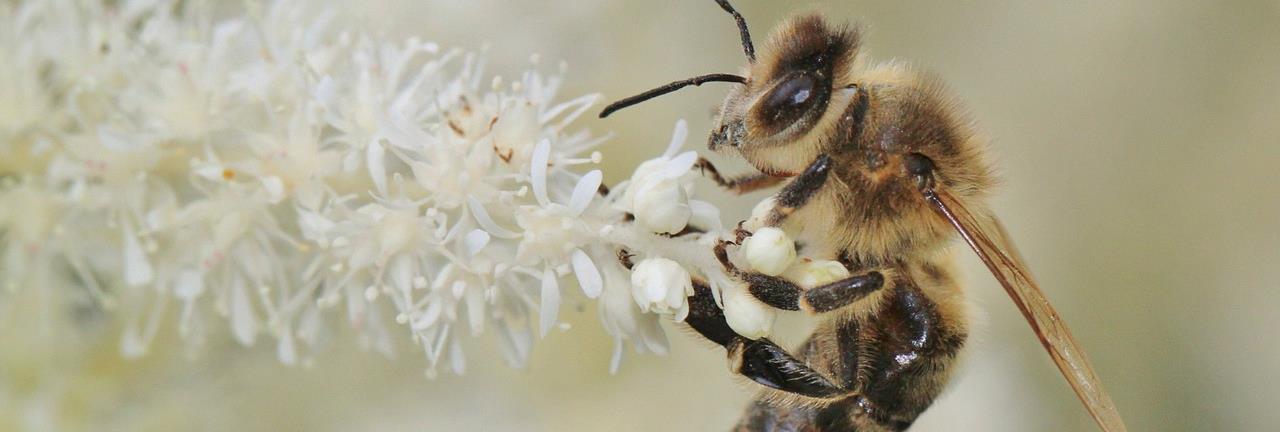The Honey bee is native to Southeast Asia and was spread to four continents by human beings. The honey bee is a eusocial flying stinging insect, which lives in colonies and has three castes: queens, workers, and drones. Workers and queens are female, while drones are males. Worker honeybees are the most familiar looking member of the honeybee hive, as they make up approximately 99% of each colony's population. The worker bees do almost everything for the hive. From birth to her death forty-five days later, the worker honeybee is given different tasks to do during various stages of her life. Worker bees are responsible for everything from feeding the larvae, to tending to the queen, to cleaning the beehive, to collecting pollen, to guarding the colony, to building the honeycomb. The worker bees sting hive intruders as a form of defense, and alarmed honey bees release a pheromone that triggers the attack response in other worker bees. The drones job is to mate with queens from other beehives. If the drones do get the opportunity to mate, they die immediately afterward. If the drones don't mate, they can live up to ninety days. Drones can be identified in the hive by their large round bodies and big eyes. Drones are not capable of stinging. There is one queen honeybee per hive, she is the mother of all the other bees. The queen bee has a life expectancy of about five years and is the only fertile member of the colony and lays approximately 1,500 eggs a day during spring and summer. Queen honeybees are differentiated from the other members of the hive by their long abdomens and small wings. Shortly after birth, queen honeybees will leave the colony and mate with fifteen or more drones for three days before returning to the hive to lay eggs. The queen will not leave the hive again unless the colony swarms in search of a new home.
